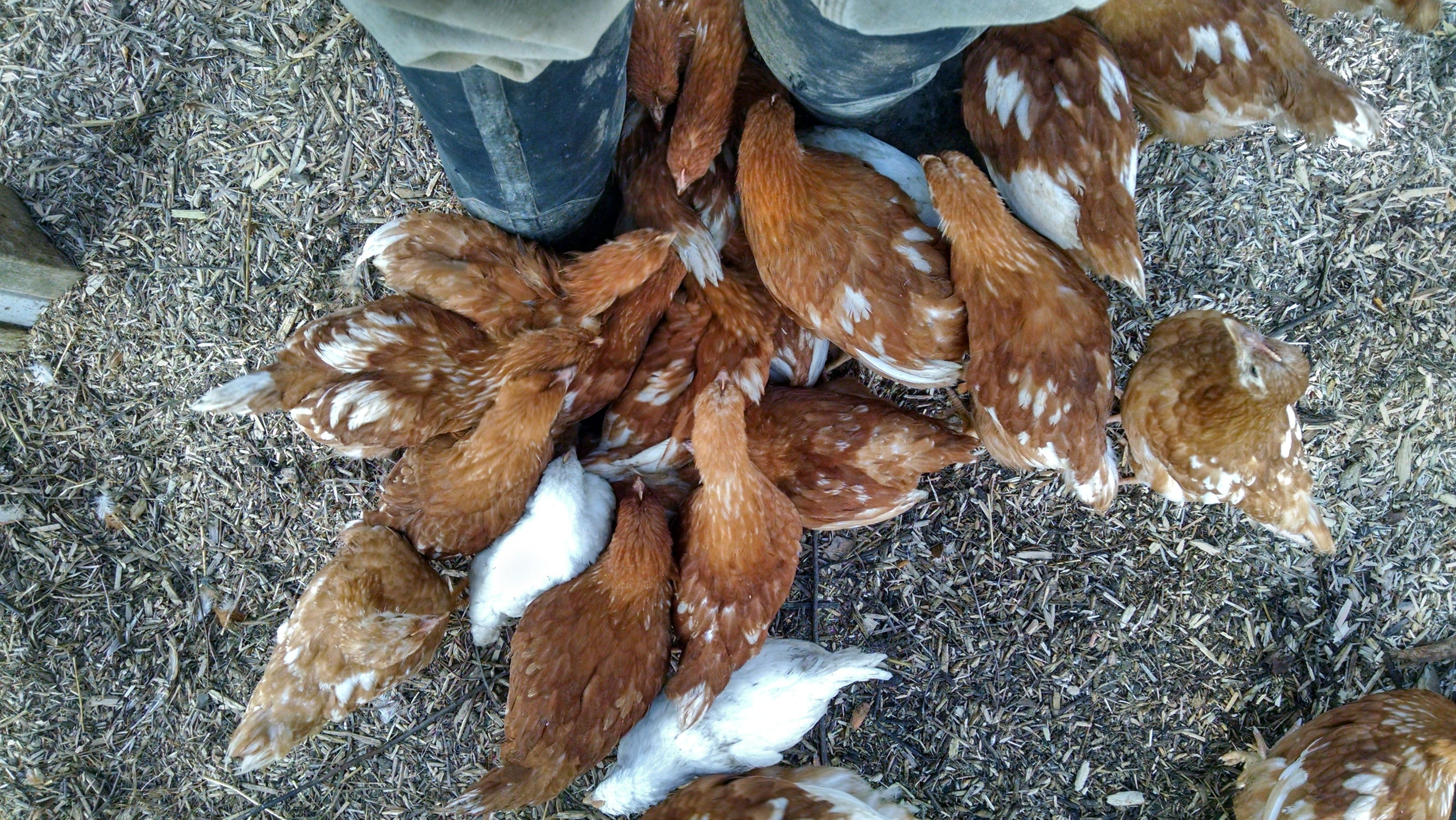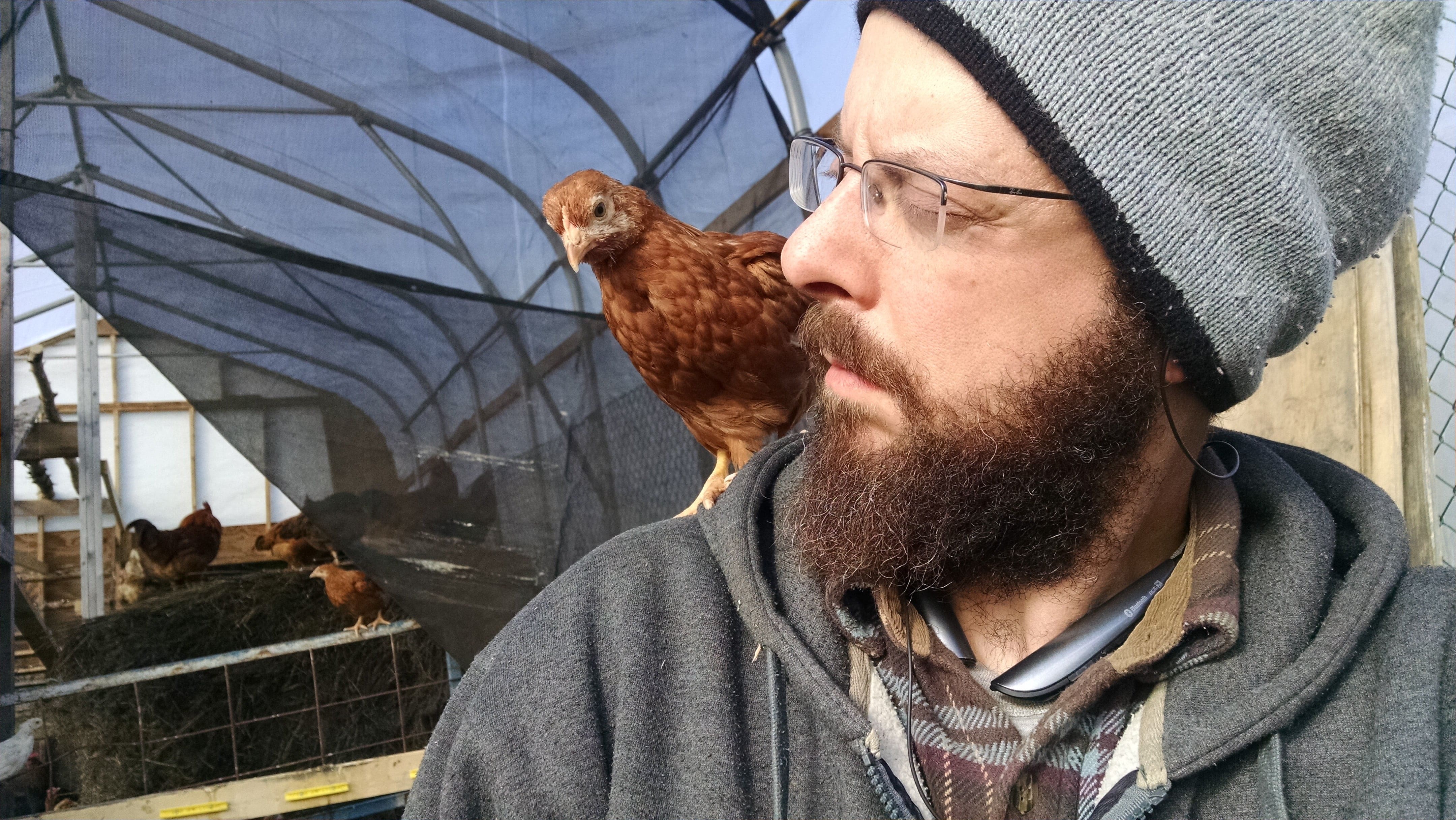The pullets suddenly transitioned from being terrified of us to mobbing us at every chance. Something must have clicked in their brains connecting us with food. Now we are their best friends. They are certainly the most gregarious group of chickens we’ve raised.



5 thoughts on “Pieces of Eight”
Are those “Red star” pullets ?
Those are red sex links (Rhode Island Red rooster x White Rock hen) from Moyer’s Chickens in PA. I think these are sometimes called Red Star, sometimes Golden Comet, depending on the hatchery.
They are beautiful birds!!!! I was wondering, is there a “fattening phase” for chickens like there is for ducks? I’ve learned that an average of 12 days at about 9-11 weeks is fattening phase for ducks. We have Philippine native chickens, not broilers, so I’m still experimenting, but wondered if it would be similar to fattening broiler chickens? All our birds are free-range too, like yours.
There can be a fattening or finishing phase for chickens. Most of my experience with raising meat chickens is with Cornish Cross broilers, and for those birds the finishing phase is kind of blurry. Most folks feed them on the same high protein starter for their entire lives. We usually have a flock of mongrel roosters running around on our place, but I keep them mainly to patrol the yard for ticks and I don’t really pay attention to what they are eating. Most of the time they feed themselves. I butcher them when they are old and tough, so their only use is slow cooked for broth or stock.
Given those qualifications of my inexperience with fattening non-meat breeds, I think that it is hard to put a finish on a chicken unless it has been selected for meat (even if it isn’t a Cornish Cross, it still helps if you are starting with a heavier bodied breed). Otherwise all you’ll get after the fattening phase is a small chicken with big, yellow fat deposits inside. If your objective is to get chicken fat for rendering, then this is a good thing, but if your objective is to plump up the bird and moisten the meat, I think you’ll have a hard time unless you (1) start with a meat breed or (2) castrate the cockerels. Not that I have any experience with castrating chickens; I’ve just read that it was the only traditional method to reliably get a good table bird.
Thank you for this thoughtful reply, Dave. I looked up videos of caponising roosters, and it might be something that I’ll try doing – in the next life!